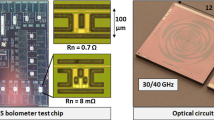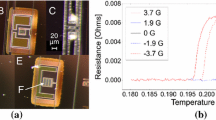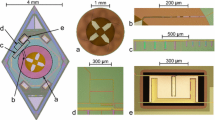Abstract
Future mm-wave and sub-mm space missions will employ large arrays of multiplexed transition-edge-sensor (TES) bolometers. Such instruments must contend with the high flux of cosmic rays beyond our atmosphere that induce ‘glitches’ in bolometer data, which posed a challenge to data analysis from the Planck bolometers. Future instruments will face the additional challenges of shared substrate wafers and multiplexed readout wiring. In this work, we explore the susceptibility of modern TES arrays to the cosmic ray environment of space using two data sets: the 2015 long-duration balloon flight of the SPIDER cosmic microwave background polarimeter, and a laboratory exposure of SPIDER flight hardware to radioactive sources. We find manageable glitch rates and short glitch durations, leading to minimal effect on SPIDER analysis. We constrain energy propagation within the substrate through a study of multi-detector coincidences and give a preliminary look at pulse shapes in laboratory data.



Similar content being viewed by others
References
M.H. Abitbol, Z. Ahmed, D. Barron et al., arXiv:1706.02464 (2017)
K.D. Irwin, & G.C. Hilton, Transition-edge sensors, in Cryogenic Particle Detection, Topics in Applied Physics, vol. 99, ed. by C. Enss (Springer, 2005)
J.W. Britton, J.P. Nibarger, K.W. Yoon et al., Proc. SPIE Int. Soc. Opt. Eng. 7741, 21 (2010). https://doi.org/10.1117/12.857885
K. Arnold et al., Proc. SPIE Int. Soc. Opt. Eng. 8452, 84521D (2012). https://doi.org/10.1117/12.927057
P.A.R. Ade, R.W. Aikin, M. Amiri et al., Astrophys. J. 812, 17 (2015). https://doi.org/10.1088/0004-637X/812/2/176
M. Hazumi, P.A.R. Ade, Y. Akiba et al., J. Low Temp. Phys. 194(5), 443 (2019)
P. Roelfsema, H. Shibai, L. Armus et al., Publ. Astron. Soc. Aust. 35, E030 (2018). https://doi.org/10.1017/pasa.2018.15
The OST mission concept study team, arXiv:1809.09702 (2018)
S. Hanany, M. Alvarez, E. Artis et al., arXiv:1902.10541 (2019)
P.A.R. Ade, N. Aghanim et al., Astron. Astrophy. 536, A1 (2011)
Planck Collaboration, Y. Akrami, F. Arroja et al., arXiv:1807.06205 (2018)
P.A.R. Ade, N. Aghanim, M. Arnaud et al., Astron. Astrophys. 571, A10 (2014). https://doi.org/10.1051/0004-6361/201321577
A. Catalano et al., Astron. Astrophys. 569, A88 (2014). https://doi.org/10.1051/0004-6361/201423868
A. Catalano, P. Ade, Y. Atik et al., J. Low Temp. Phys. 176(5), 773–786 (2014). https://doi.org/10.1007/s10909-014-1116-6
J.P. Filippini, P.A.R. Ade, M. Amiri et al., Proc. SPIE (2010). https://doi.org/10.1117/12.857720
A.A. Fraisse, P.A.R. Ade, M. Amiri et al., J. Cosmol. Astropart. Phys. 4, 047 (2013)
J.M. Nagy, P.A.R. Ade, M. Amiri et al., Astrophys. J 844, 151 (2017). https://doi.org/10.3847/1538-4357/aa7cfd
P.A.J. de Korte, J. Beyer, S. Deiker et al., Rev. Sci. Instrum. 74, 3807 (2003)
G.M. Stiehl, H.M. Cho, G.C. Hilton et al., IEEE Trans. Appl. Supercond. 21, 298 (2011)
E.S. Battistelli, M. Amiri, B. Burger et al., J. Low Temp. Phys. 151, 908 (2008)
S. Agostinelli, J. Allison, K. Amako, J. Apostolakis et al., Nucl. Inst. Method A 506(3), 250 (2003)
J. Allison, K. Amako, J. Apostolakis, H. Araujo et al., IEEE Trans. Nucl. Sci. 53(1), 270 (2006)
J. Allison, K. Amako, J. Apostolakis, P. Arce et al., Nucl. Inst. Method A 835, 186 (2016)
Acknowledgements
This work is supported by NASA’s Strategic Astrophysics Technology program (14-SAT14-0009, 16-SAT16-0002). SPIDER is supported by in the USA by NASA (NNX07AL64G, NNX12AE95G, NNX17AC55G) and NSF (PLR-1043515); in Canada by NSERC and CSA; as well as by the Research Council of Norway, the Swedish Research Council, and the Packard Foundation. Logistical support in Antarctica is supported by the NSF through the US Antarctic Program. The collaboration is grateful to the British Antarctic Survey, particularly Sam Burrell, for invaluable assistance with data and payload recovery after the 2015 flight.
Author information
Authors and Affiliations
Corresponding author
Additional information
Publisher's Note
Springer Nature remains neutral with regard to jurisdictional claims in published maps and institutional affiliations.
Rights and permissions
About this article
Cite this article
Osherson, B., Filippini, J.P., Fu, J. et al. Particle Response of Antenna-Coupled TES Arrays: Results from SPIDER and the Laboratory. J Low Temp Phys 199, 1127–1136 (2020). https://doi.org/10.1007/s10909-020-02415-4
Received:
Accepted:
Published:
Issue Date:
DOI: https://doi.org/10.1007/s10909-020-02415-4




